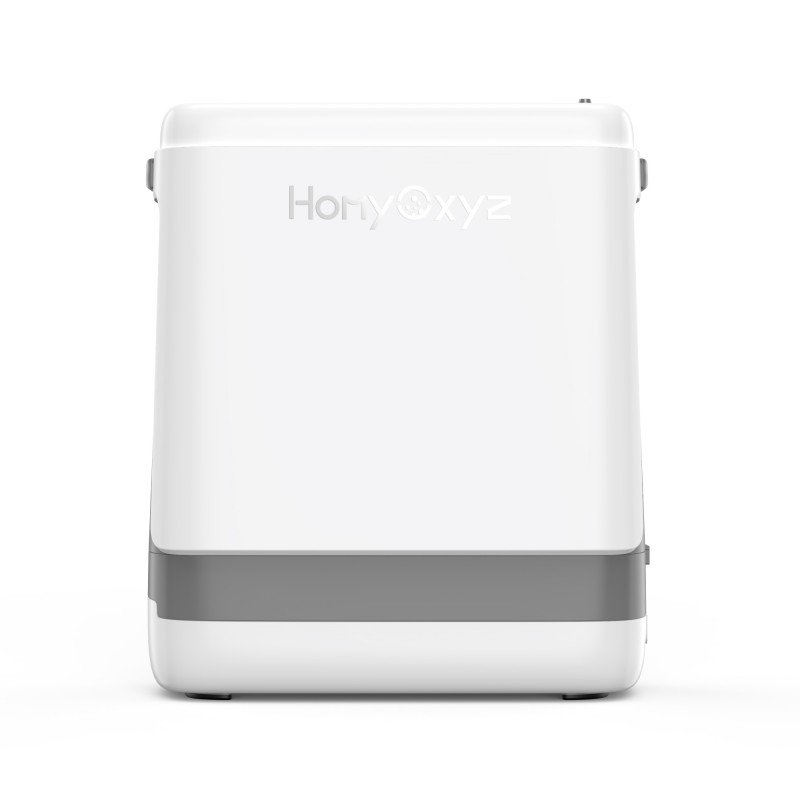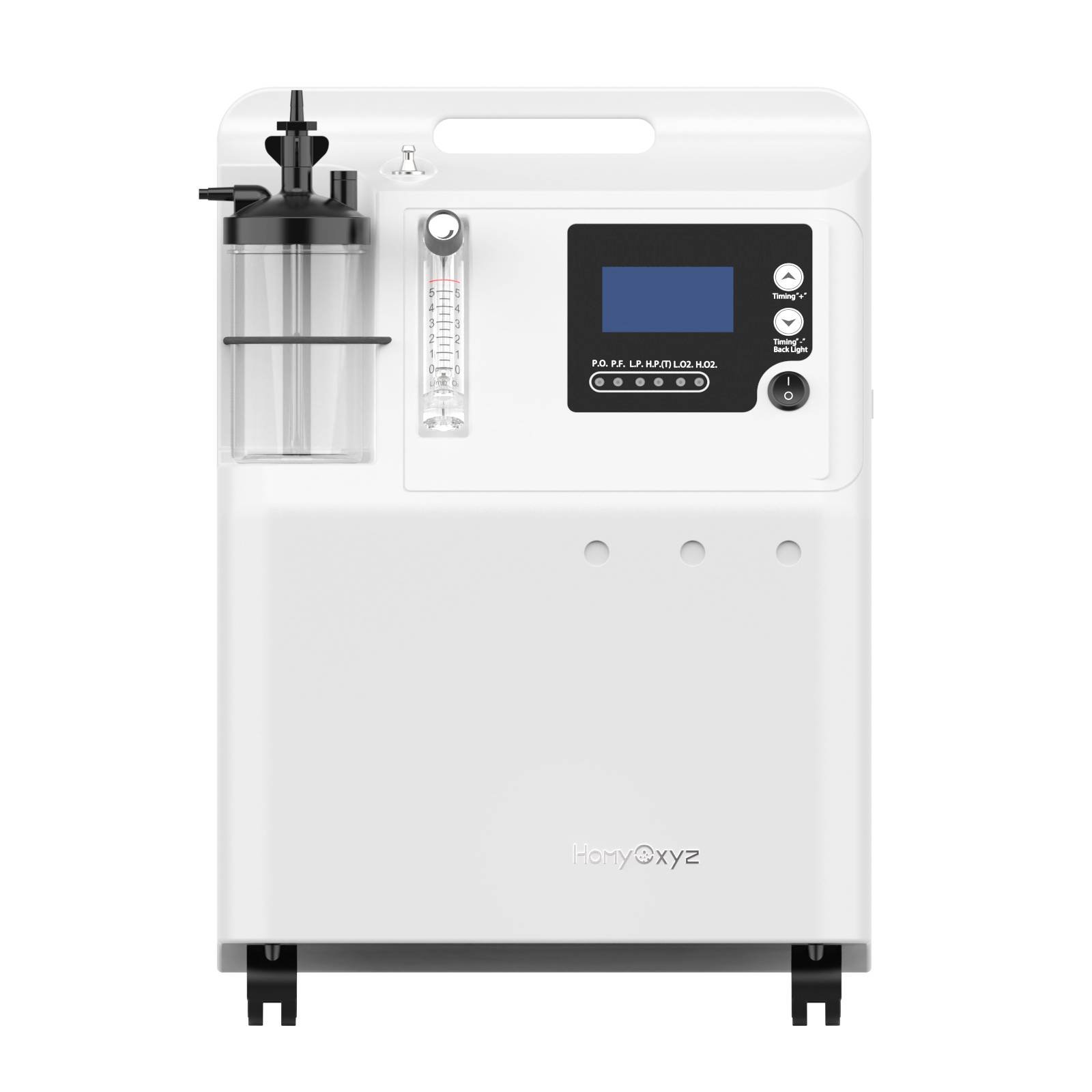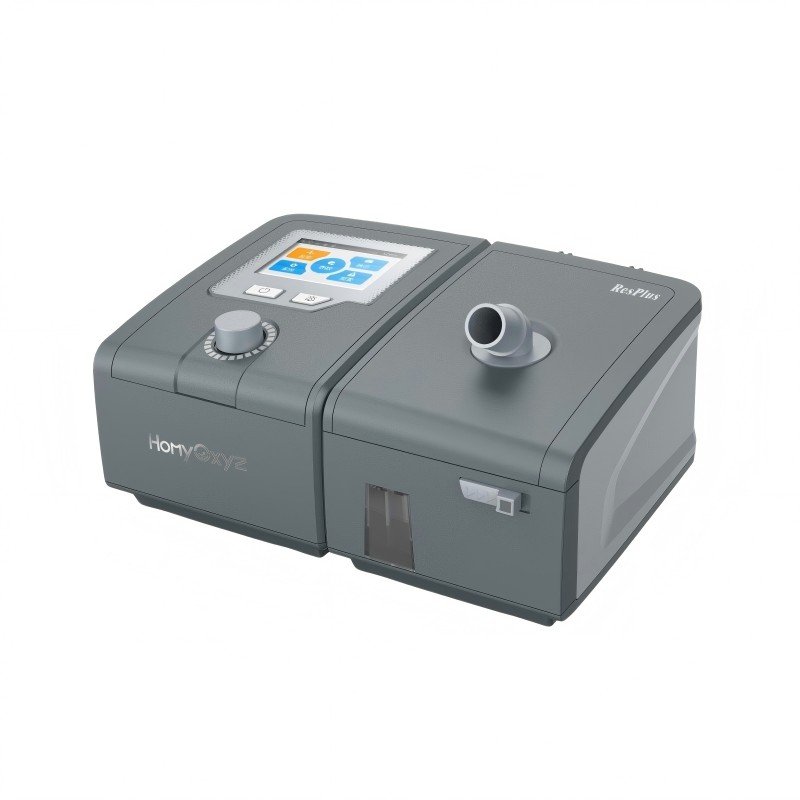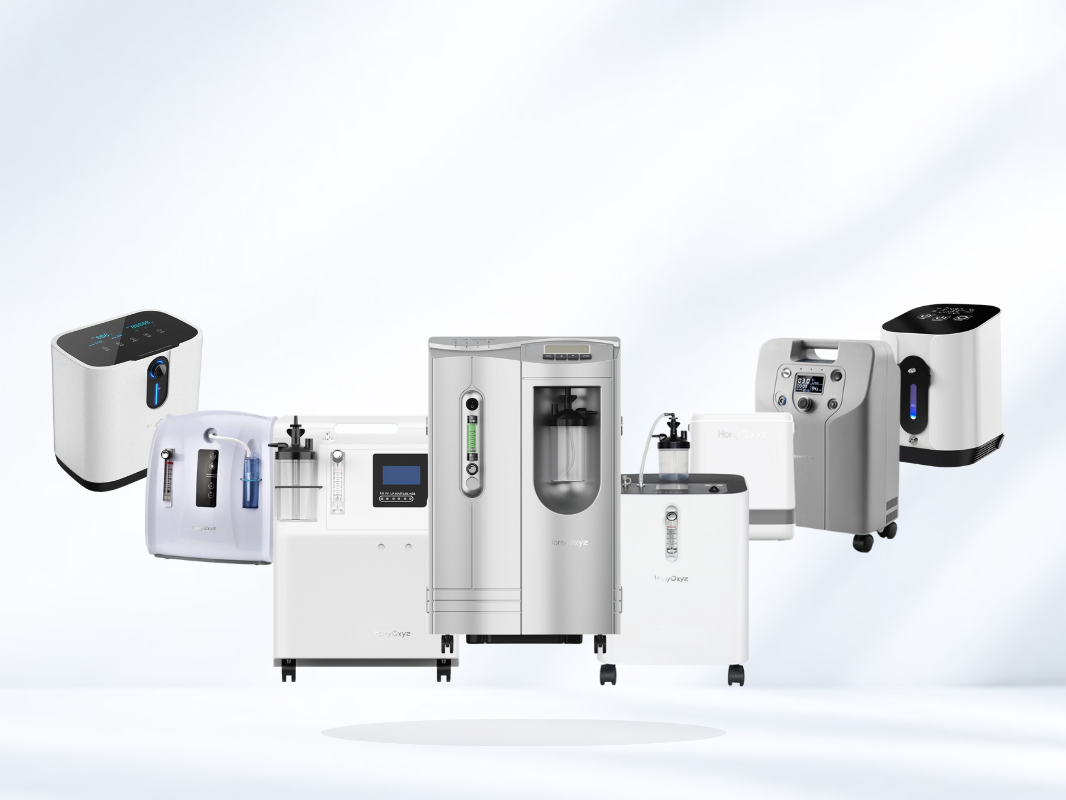Introduction
In the field of health care, oxygen concentrator plays a vital role, which provides convenience for many patients who need extra oxygen support. Whether the respiratory function is damaged due to chronic diseases or oxygen needs to be supplemented in special circumstances, a suitable oxygen concentrator can greatly improve the quality of life. In this article, the common types of oxygen concentrator will be discussed in depth to help you better understand and choose the equipment that suits your needs.

I. The basic principle of oxygen concentrator
Oxygen concentrator, also known as concentrator oxygen machine or oxygen concentrator machine, is based on molecular sieve technology. The air mainly contains nitrogen, oxygen and a small amount of other gases. The oxygen concentrator adsorbs nitrogen in the air through molecular sieve, thus separating and concentrating the oxygen. This process enables patients to obtain high-purity oxygen conveniently without relying on traditional oxygen cylinders, thus avoiding the trouble of frequent replacement of gas cylinders. Generally speaking, molecular sieves can increase the oxygen concentration in the air from about 21% to over 90% to meet the treatment needs of patients.
II. The Stationary Oxygen Concentrator
1. Detailed analysis of HO-HG5W Stationary Oxygen Concentrator
(1) Powerful performance and characteristics
HO-HG5W Stationary Oxygen Concentrator is a leader among stationary oxygen concentrators. This device has a stable and efficient oxygen output capacity, which can continuously provide patients with the required concentration of oxygen for a long time. It adopts advanced molecular sieve technology to ensure the high purity output of oxygen. Its working noise is relatively low, usually running noise is about 40 decibels, which will not cause too much interference to the rest and living environment of patients.
(2) Applicable scenes and crowds
It is suitable for patients who need oxygen therapy for a long time and whose activities are mainly concentrated indoors. For example, patients with chronic respiratory diseases, such as chronic obstructive pulmonary disease (COPD) and pulmonary fibrosis, need to take oxygen regularly and quantitatively in their daily lives to relieve symptoms such as dyspnea. Take a patient with severe COPD as an example, who needs oxygen for more than 15 hours every day. The stability and high output capacity of HO-HG5W Stationary Oxygen Concentrator can meet their needs well.
2. The advantages of stationary oxygen concentrator
(1) High flow and high concentration output
Generally speaking, the stationary oxygen concentrator can provide a high oxygen flow rate, which can meet the demand of patients for oxygen at different stages of illness. Its oxygen flow rate can usually be adjusted between 1-10 liters/minute, and at the same time, its output oxygen concentration is relatively stable, which can always be kept within the standard range of 90%-96% of medical requirements, providing reliable guarantee for patients’ treatment.
(2) High use stability
Because it is fixedly installed in a certain position indoors, it is not affected by factors such as vibration and collision during moving, and the stability of the equipment is excellent. This is helpful to reduce the probability of equipment failure, ensure long-term stable operation, and provide continuous support for patients’ oxygen inhalation treatment. According to statistics, the average trouble-free running time of stationary oxygen concentrator can reach more than 5000 hours.
III. Portable Oxygen Concentrator
1. HO-JAY1000P Portable Oxygen Concentrator depth analysis
(1) Portable design and functional highlights
HO-JAY1000P Portable Oxygen Concentrator stands out with its excellent portability. It is compact and weighs only about 3 kilograms, which is convenient for patients to carry around. The equipment is equipped with a high-performance battery, which can support 2-4 hours of continuous operation in the standard oxygen output mode after being fully charged at one time, so as to meet the oxygen demand of patients when they go out. In addition, it also has a variety of oxygen output modes, which can be flexibly adjusted according to the actual situation of patients.
(2) Application Scenarios and User Experience
This device is ideal for patients who need to go out frequently but still need oxygen therapy. For example, some patients with heart disease or respiratory diseases, in travel, shopping, walking and other activities, HO-JAY1000P Portable Oxygen Concentrator can provide them with oxygen support anytime and anywhere, so that they can participate in daily life more freely. There is feedback from patients, and traveling with this device does not affect the pleasure of the trip at all. On the contrary, because you can take oxygen at any time, your physical condition remains very good.
2. Comparison of different types of portable oxygen concentrators
(1) Lightest portable oxygen concentrator
There are some portable oxygen concentrators on the market with ultra-light weight as the selling point. This kind of equipment usually adopts lightweight materials and compact design, so that patients can hardly feel the burden when carrying it. For example, some models weigh only 1.5 kilograms, and patients can easily carry them on their backs or put them in carry-on bags, just like carrying an ordinary small item.
(2) Best portable oxygen concentrator continuous flow
Best portable oxygen concentrator continuous flow can provide stable oxygen flow for patients, especially for those patients who have strict requirements on oxygen flow. This kind of equipment is optimized in technology to ensure the continuity and stability of the flow when outputting oxygen, thus ensuring the therapeutic effect of patients. For example, for some patients with sleep apnea hypopnea syndrome who need a stable oxygen flow during sleep, such equipment can play a very good role.
(3) Continuous flow portable concentrator
The working principle of continuous flow portable concentrator is different from other portable oxygen concentrators. It can continuously output oxygen, instead of intermittent oxygen supply like some pulse output devices. For some patients who need continuous oxygen inhalation, it can provide a more stable oxygen supply and help maintain the normal oxygenation level of the body. For example, patients traveling in high altitude areas need continuous oxygen inhalation to alleviate altitude sickness because of the low oxygen content in the environment, and the continuous flow portable concentrator has become their right-hand man.

IV. Portable oxygen concentrator battery related problems
1. The importance of portable oxygen concentrator battery
Portable oxygen concentrator with battery is one of the key factors to realize portability. A high-performance battery can ensure the normal operation of the equipment when it is out of the power socket, and meet the oxygen demand of patients during going out. The battery life directly affects the patient’s travel time and range of activities. If the battery life is insufficient, patients may face the dilemma of not being able to take oxygen normally during going out.
2. Battery life and charging method
(1) Influencing factors of endurance
The battery life depends on many factors, including battery capacity, power consumption of equipment and oxygen output flow. Generally speaking, the larger the battery capacity, the longer the battery life. At the same time, if the equipment outputs oxygen at a high flow rate, the power consumption will increase accordingly, thus shortening the service life of the battery. For example, when the device outputs oxygen at a flow rate of 2 liters/minute, the battery life may be 3 hours, and when the flow rate is increased to 4 liters/minute, the battery life may be shortened to 2 hours.
(2) Diversity of charging methods
In order to facilitate the use of patients, the battery charging methods of portable oxygen concentrator are increasingly diversified. In addition to the common use of power adapters for charging, some devices also support car charging, which enables patients to charge their batteries at any time while driving. In addition, some high-end products also have fast charging function, which can replenish a lot of electricity for the battery in a short time and reduce the waiting time of patients. For example, some devices use fast charging technology, which can charge the battery from 20% to 80% in just 30 minutes.

V. How to choose the oxygen concentrator that suits you?
1. consider their own needs
(1) Disease types and oxygen demand
Different diseases have different needs for oxygen. For example, patients with chronic obstructive pulmonary disease may need a high flow rate and a continuous and stable oxygen supply, while some patients with mild respiratory diseases may only need low flow oxygen inhalation under certain circumstances. Therefore, patients should determine the required oxygen flow, concentration and other parameters according to their own disease types and doctors’ suggestions. The doctor will give specific suggestions on oxygen inhalation according to the results of patients’ lung function test and blood gas analysis data.
(2) Scope of activities and portability requirements
If the patient’s activity range is mainly indoors, then the fixed oxygen concentrator may be a better choice because of its stable performance and strong output capacity. For patients who often go out for activities, portable oxygen concentrator is more suitable. When choosing a portable oxygen concentrator, you should also consider the weight, volume and battery life of the equipment to ensure that it can meet your travel needs. For example, patients who often travel by air need to choose a portable oxygen concentrator that meets the requirements of air transportation.
2. Pay attention to product performance and quality
(1) Stability and purity of oxygen output
No matter what type of oxygen concentrator is selected, the stability and purity of oxygen output are very important. Unstable oxygen output may affect the therapeutic effect of patients, while low-purity oxygen cannot achieve the expected therapeutic purpose. Therefore, when selecting equipment, we should pay attention to the technical parameters and user evaluation of the product to ensure that it can provide stable and high-purity oxygen. You can know the oxygen output performance of the equipment by looking at the product manual, consulting a doctor or referring to the evaluation of other users.
(2) Reliability and durability of equipment
Oxygen concentrator is a long-term medical equipment, and its reliability and durability are directly related to the patient’s experience and later maintenance costs. Choosing well-known brands and reliable products can reduce the probability of equipment failure and reduce the frequency of equipment maintenance and replacement. Some well-known brands will provide a long quality guarantee period, which also reflects the reliability of products from the side.
VI. Future Development Trend of oxygen concentrator
1. Technological innovation to promote performance improvement
With the continuous progress of science and technology, the technology of oxygen concentrator is also constantly innovating. In the future, we are expected to see more efficient molecular sieve technology, which can further improve the separation efficiency and purity of oxygen. At the same time, the power consumption of the equipment may be further reduced, thus prolonging the battery life and improving the practicability of the portable oxygen concentrator. For example, new material technology may improve the adsorption efficiency of molecular sieve by 50%, thus reducing the energy consumption of equipment.
2. The development of intelligent and remote monitoring functions
Intelligent and remote monitoring function will become the important development direction of oxygen concentrator in the future. By connecting to the Internet, the equipment can realize remote monitoring and data transmission, and doctors can know the oxygen inhalation of patients in real time and adjust the treatment plan according to the data. In addition, the intelligent oxygen concentrator may also have the function of automatically adjusting the oxygen output parameters, adjusting the oxygen flow and concentration in real time according to the patient’s physical condition, and providing more personalized treatment services for patients. For example, the device can be connected with the intelligent health monitoring device worn by the patient to obtain data such as the patient’s heart rate and blood oxygen saturation, and automatically adjust the oxygen output.

VII. Conclusion
As an important medical equipment, oxygen concentrator brings good news to many patients who need oxygen support. Stationary oxygen concentrator, such as HO-HG5W Stationary Oxygen Concentrator, meets the needs of long-term indoor oxygen inhalation patients with its stable performance and high output capacity. Portable oxygen concentrator, such as HO-JAY1000P Portable Oxygen Concentrator, provides a convenient oxygen inhalation solution for patients who often go out. When choosing an oxygen concentrator, patients should fully consider their own needs, product performance and quality. With the continuous development of technology, it is believed that the oxygen concentrator will provide patients with more efficient, convenient and personalized oxygen treatment services in the future. Both stationary and portable oxygen concentrators are constantly evolving, and they are committed to improving the quality of life of patients, so that more people can enjoy a healthier and more free life with the support of oxygen. We look forward to a greater breakthrough in oxygen concentrator technology in the future, which will bring more surprises and changes to the medical care field, such as developing an oxygen concentrator that can more accurately cooperate with the human body’s own physiological system, and further enhance the treatment experience and rehabilitation effect of patients.

 Blog
Blog














